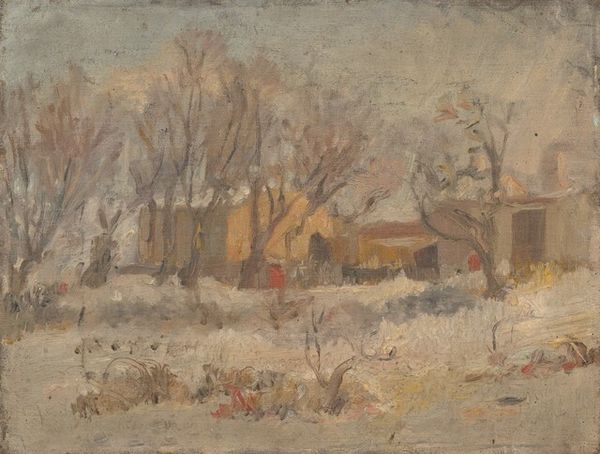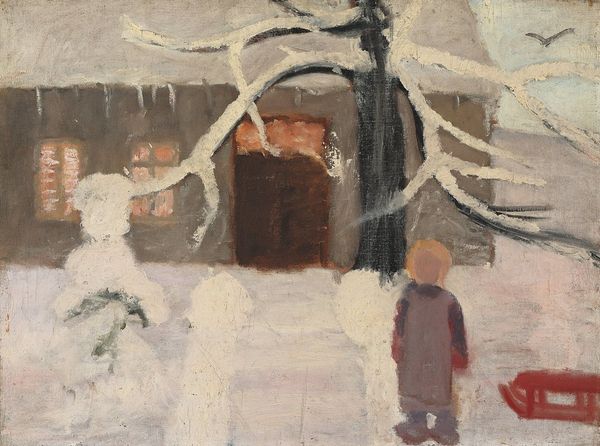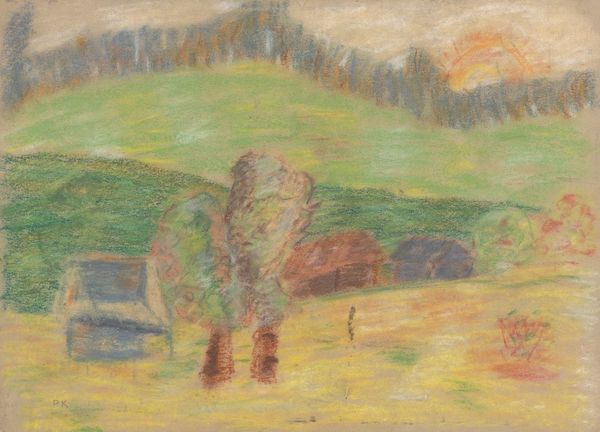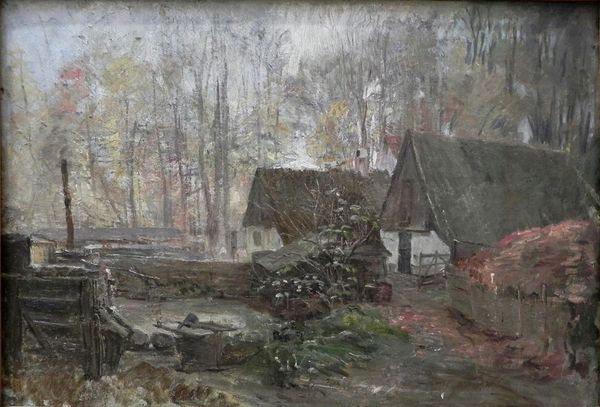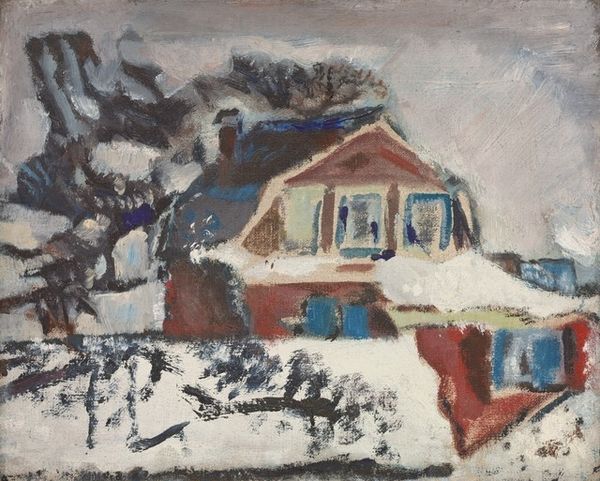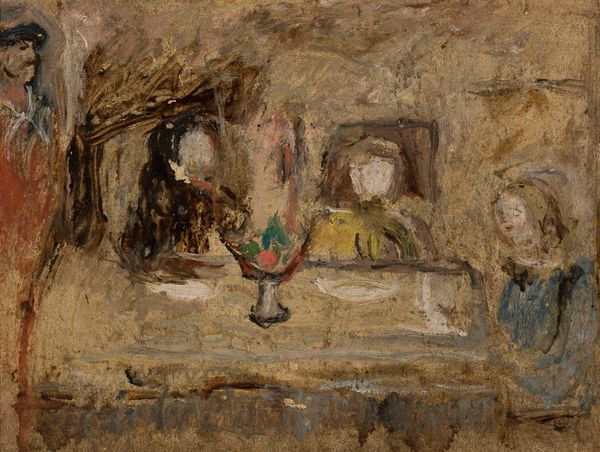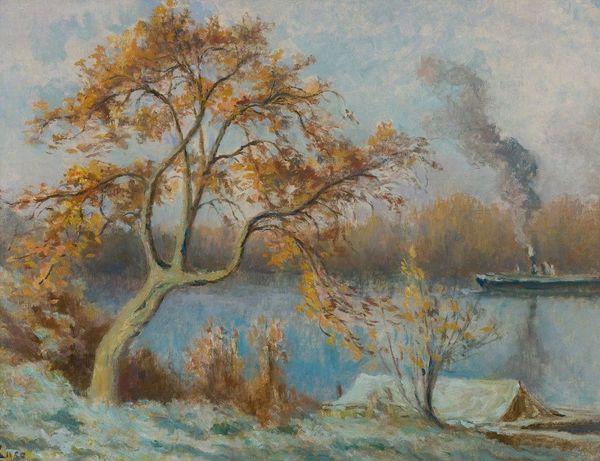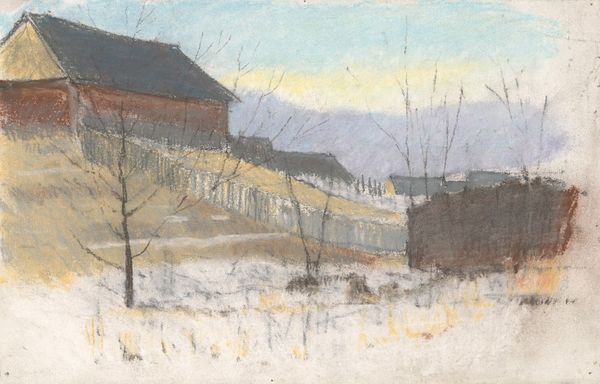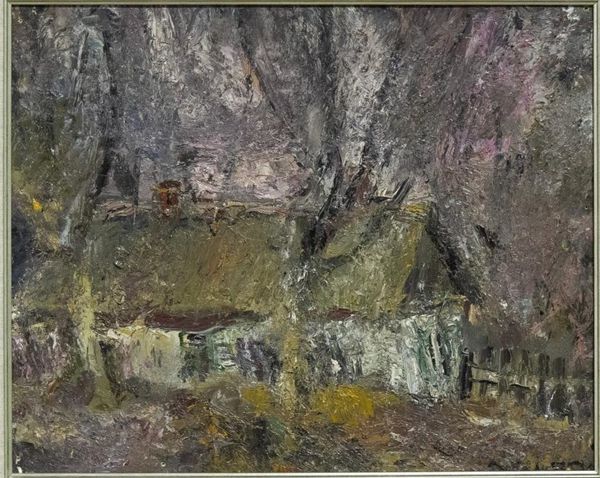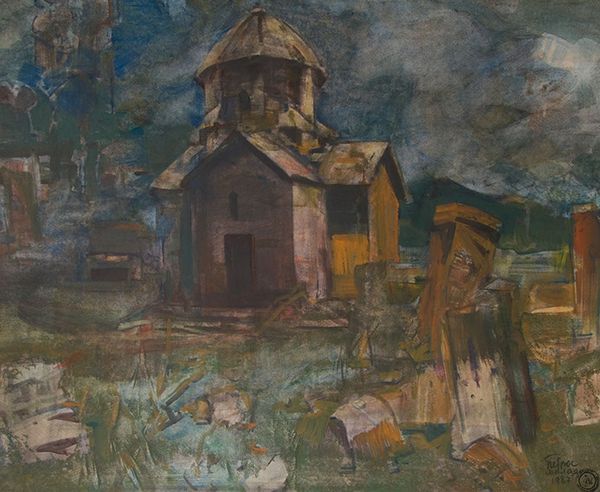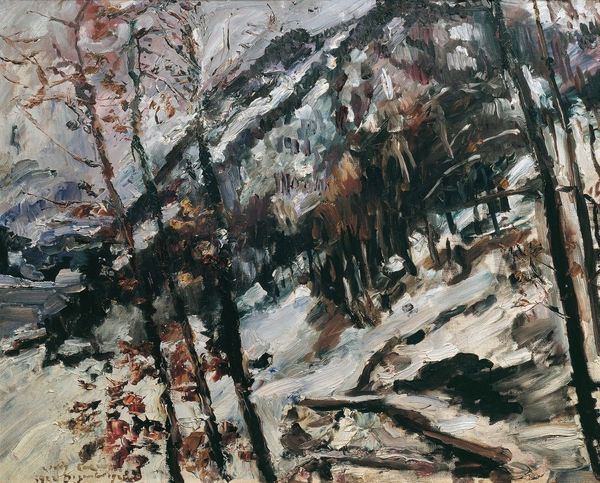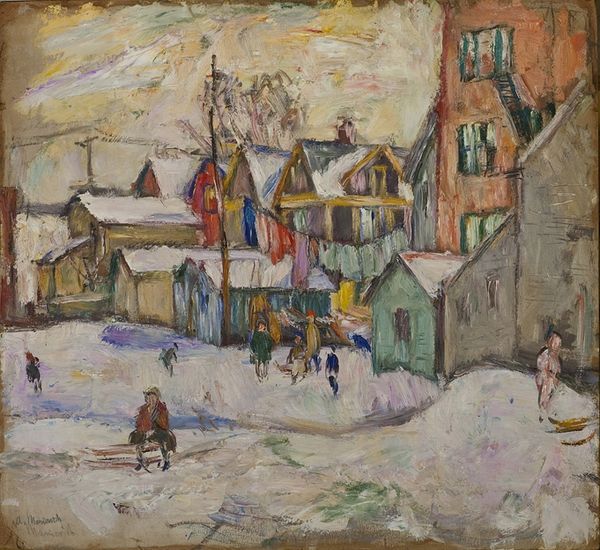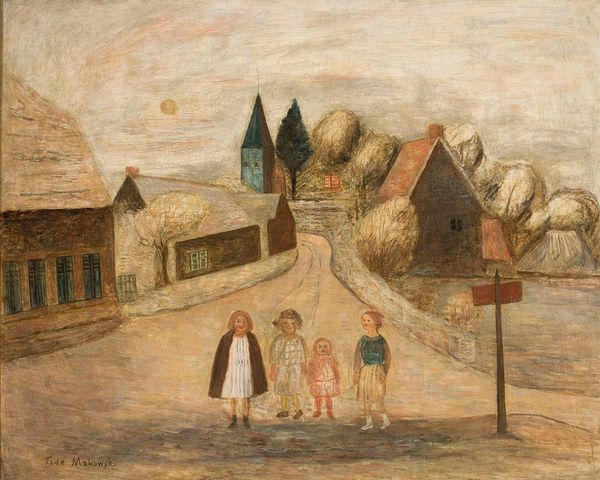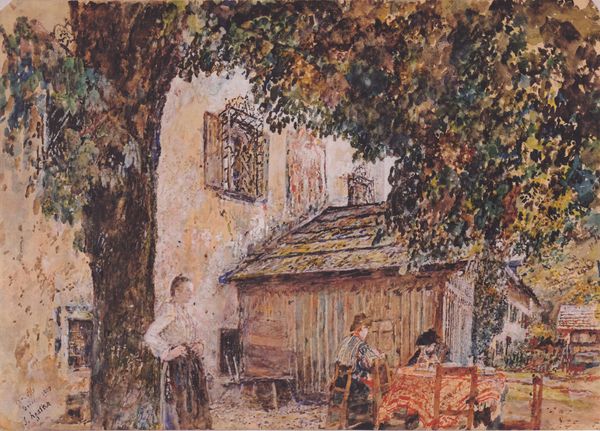
painting, oil-paint
#
portrait
#
figurative
#
painting
#
oil-paint
#
landscape
#
figuration
#
oil painting
#
expressionism
#
watercolor
Copyright: Public Domain: Artvee
Curator: This is Tadeusz Makowski’s oil painting, "Two Little Girls Against the Background of a Landscape," painted in 1918. Editor: It evokes a stark and ethereal quality with its muted tones; the visible brushstrokes and textures give it a tangible, almost rough feel. Curator: Right. Makowski was deeply interested in the lives of the rural peasantry, and this is a compelling depiction of children, perhaps on their way to or from work, against the backdrop of the village. The social conditions during that period were undeniably harsh for rural workers. Editor: Absolutely, and the figures of the girls here seem to reflect those difficulties. What fascinates me are his deliberate, and perhaps expressive, use of materials: coarse canvas, visible layering of paint and the impasto in areas. It seems intentional, mirroring the conditions of their lives in some way. The paint handling itself tells a story. Curator: Consider the institutions supporting artists such as Makowski at that time, like the art academies and societies. They struggled with whether to champion representations of rural life that might critique existing power structures, while simultaneously showcasing “folk” imagery deemed sufficiently ‘Polish’. The painting operates on this ambiguous terrain. Editor: Interesting, it’s a powerful balancing act! I see now how he’s highlighting the realities and using the very medium to express it – to convey their day-to-day realities but filtered through an aesthetic that the academies could endorse. I mean, you can see how much work has gone into constructing the textured environment of that painting. It isn't a spontaneous outburst; it has been carefully crafted. Curator: Exactly. It’s about visibility within existing institutional frameworks. It speaks volumes about the place of these subjects within society at that moment. Editor: Considering the date, 1918, it’s almost impossible to ignore the context of war. It’s fascinating to consider how an artwork created amid such immense social and economic shifts may also provide some hope. Curator: The materiality, the subject matter and the cultural context—all intersect. Food for thought about Polish society a century ago! Editor: Indeed. Art doesn’t just represent reality, it’s deeply interwoven with social context. A lot to think about.
Comments
No comments
Be the first to comment and join the conversation on the ultimate creative platform.
